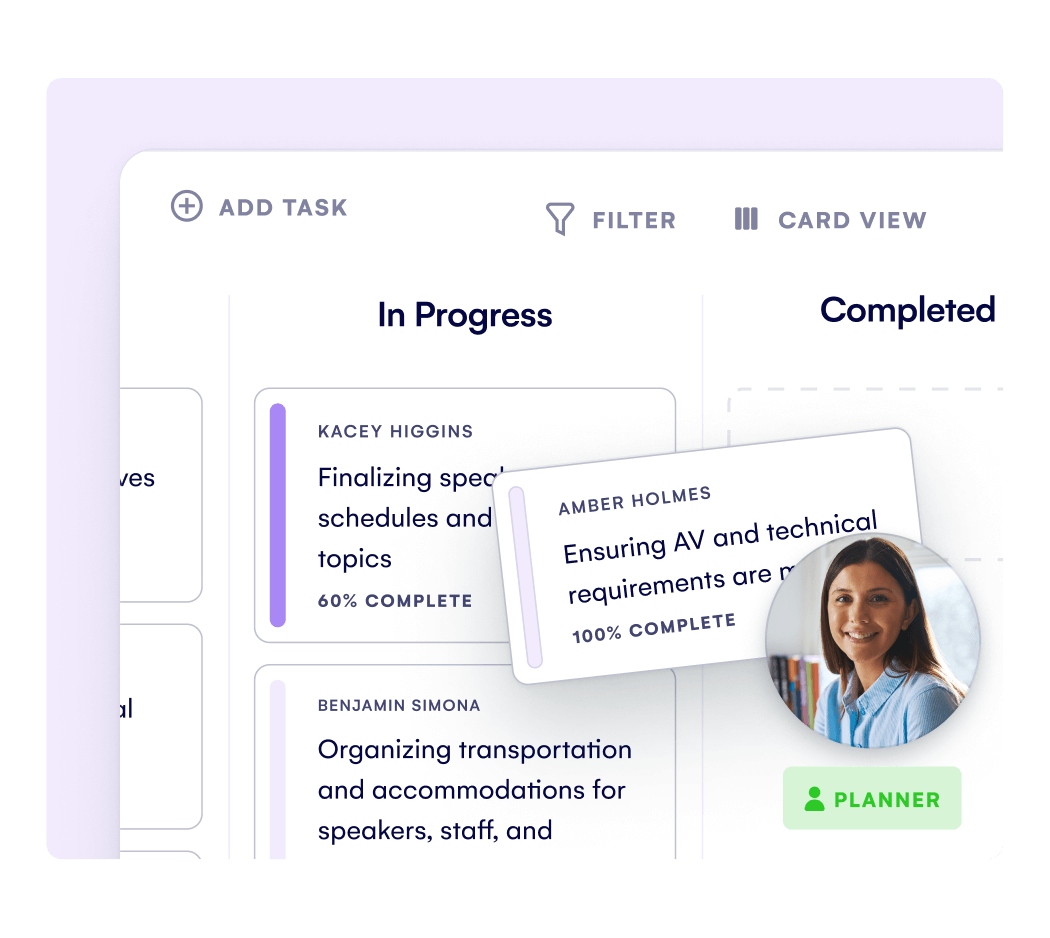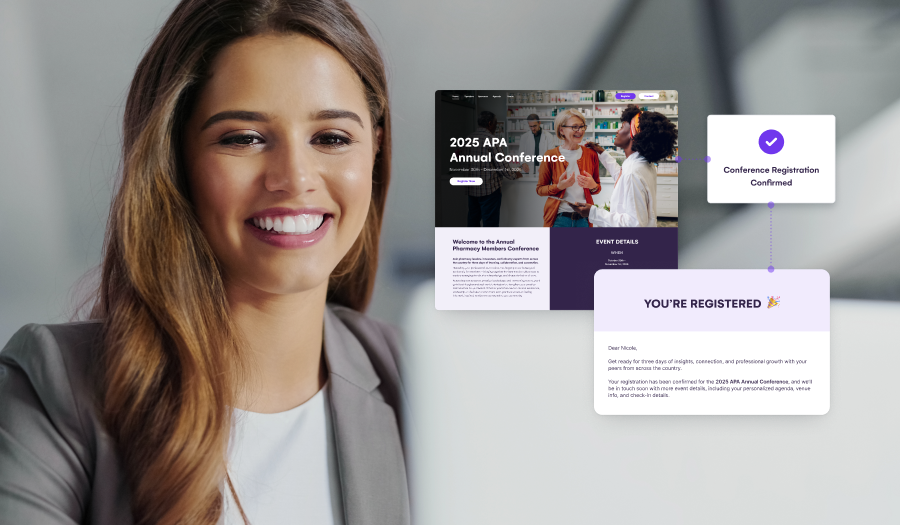
Maintaining event safety involves proactive planning, strategic coordination, and vigilant execution. From assessing risks to developing response plans, a comprehensive approach is essential to minimize hazards and ensure a smooth event experience for all participants.
In this EventsAir article, we’ll guide you through actionable steps to prioritize event safety, highlight essential tools for risk management, and offer expert tips to bolster your safety protocols.
What is event safety?
Event safety isn’t just putting up a few exit signs. It’s a comprehensive system of protocols that protect everyone at your event—from attendees to staff. Think risk assessments, emergency plans, security measures, and real-time communication working together to create a secure environment.
Making it work requires tight coordination between organizers, security teams, and local authorities. You’re managing everything from crowd flow and medical support to fire safety and evacuation procedures. Get it right, and you’ll reduce risks, build attendee confidence, and stay compliant while running a smooth event.
Why is event safety important?
Event safety isn’t optional—it’s crucial for success. Here’s why:
- Protects everyone: Minimizes accidents, injuries, and emergencies
- Meets legal requirements: Helps you avoid fines and compliance issues
- Builds trust: Shows attendees and stakeholders you take their safety seriously
- Handles emergencies: This lets you respond quickly when things go wrong
- Reduces liability: Protects against legal and financial risks
How to plan for event safety (5 steps)
1. Conduct a thorough risk assessment
A solid risk assessment sets your foundation for event safety. But you need more than a basic checklist—you need a systematic approach that catches potential hazards before they become problems.
Here’s what to assess:
- Venue layout: Look for bottlenecks, narrow exits, and overcrowding risks
- Technical equipment: Check every piece of AV gear, lighting rig, and power source
- External factors: Consider weather impacts and local safety concerns
Don’t tackle this alone. Get input from experienced team members and safety experts to expand your assessment. Tools like EventsAir’s pre-event planning features can help you assign tasks and track progress systematically.

Document everything—each risk needs a clear mitigation plan. Take fire safety, for example. Map out extinguisher locations, mark emergency exits, and make sure every team member knows their role if something goes wrong.
This proactive approach doesn’t just minimize threats—it sets the tone for your entire event’s safety culture.
2. Develop an emergency response plan
Your emergency response plan needs to be more than a document gathering dust. It’s your playbook for when things go wrong – and every team member needs to know their part by heart.
Every solid emergency plan needs:
- Evacuation procedures: Clear exit routes, meeting points, and staff responsibilities
- Medical response: First aid locations, designated responders, and local emergency contacts
- Communication chain: Who alerts whom, when, and how during a crisis
- Equipment setup: Two-way radios and backup communication devices
- Team training: Regular drills and response practice sessions
Run regular drills to expose gaps in your plan before a real emergency arises. Then update your protocols based on what you learn – your plan should evolve with each event, incorporating new lessons and adapting to changing conditions.
3. Ensure compliance with safety regulations
Compliance isn’t the most exciting part of event planning, but it prevents legal headaches and keeps your event running smoothly. Stay current with local, state, and national safety codes – they affect everything from fire safety to crowd control.
Your compliance checklist should cover:
- Capacity limits: Know and enforce your venue’s maximum occupancy
- Required permits: Secure all event-specific and location-based permissions
- Safety inspections: Schedule mandatory checks before doors open
- Staff training: Ensure your team knows current regulations
- Documentation: Keep permits and inspection records easily accessible
Event management tools can be a big help here.

For example, EventsAir’s check-in and attendee tracking features help you manage guest flow and stick to capacity limits. You have multiple options for attendee management – from staffed kiosks to beacons – so you can choose what works best for your venue and crowd size.
4. Implement crowd management strategies
Smart crowd management starts with strategic planning. Map out how attendees will move through your space, focusing on entrances, exits, and high-traffic zones. Place clear signs and physical barriers to prevent bottlenecks and keep traffic flowing smoothly.
Position trained staff at key points to assist attendees and manage flow. Consider using timed entry slots for larger events – this prevents the crush of everyone arriving at once. Keep emergency exit paths clear and easily accessible throughout your event.
Watch for early warning signs of crowd issues. Train your staff to recognize signs of crowd stress and act quickly to resolve problems before they escalate. A proactive approach here prevents most issues before they start, keeping your event running smoothly and your attendees comfortable.
5. Establish real-time communication protocols
Your team needs to stay connected during your event – period. Don’t just hand out equipment – test everything in your venue to identify dead zones or interference before event day.
Essential communication elements:
- Reliable tools: Equip staff with radios, mobile devices, or event management apps
- Clear channels: Create specific lines for security, medical, and entrance teams
- Response templates: Prepare messages for common scenarios
- Regular check-ins: Run consistent radio checks between team leads
- Backup plans: Have offline protocols ready when technology fails
Work with your venue coordinator to establish your communication flow. They’ll be your go-to for security, medical support, and capacity monitoring at most events.
Align your team’s communication with the venue’s protocols and make sure everyone knows who to contact and when. This keeps your event running smoothly while tapping into the venue’s proven safety systems.
Plan safer events with EventsAir
Ensuring event safety requires meticulous planning, compliance with regulations, and proactive communication. By following these steps, you can create a secure environment that prioritizes attendee well-being and supports seamless event execution. For comprehensive safety tools, consider EventsAir to enhance your planning process.
EventsAir provides a robust platform with pre-event planning, real-time communication, and attendee management tools. These features help event organizers maintain safety, comply with regulations, and coordinate efficiently to manage any situation effectively.
Enhance your event safety strategy with EventsAir’s comprehensive event management solutions today.
Best Practice | Event Planning & Management
See EventsAir in action
Discover why 12,000+ event professionals trust EventsAir to deliver effortless events, every time.




